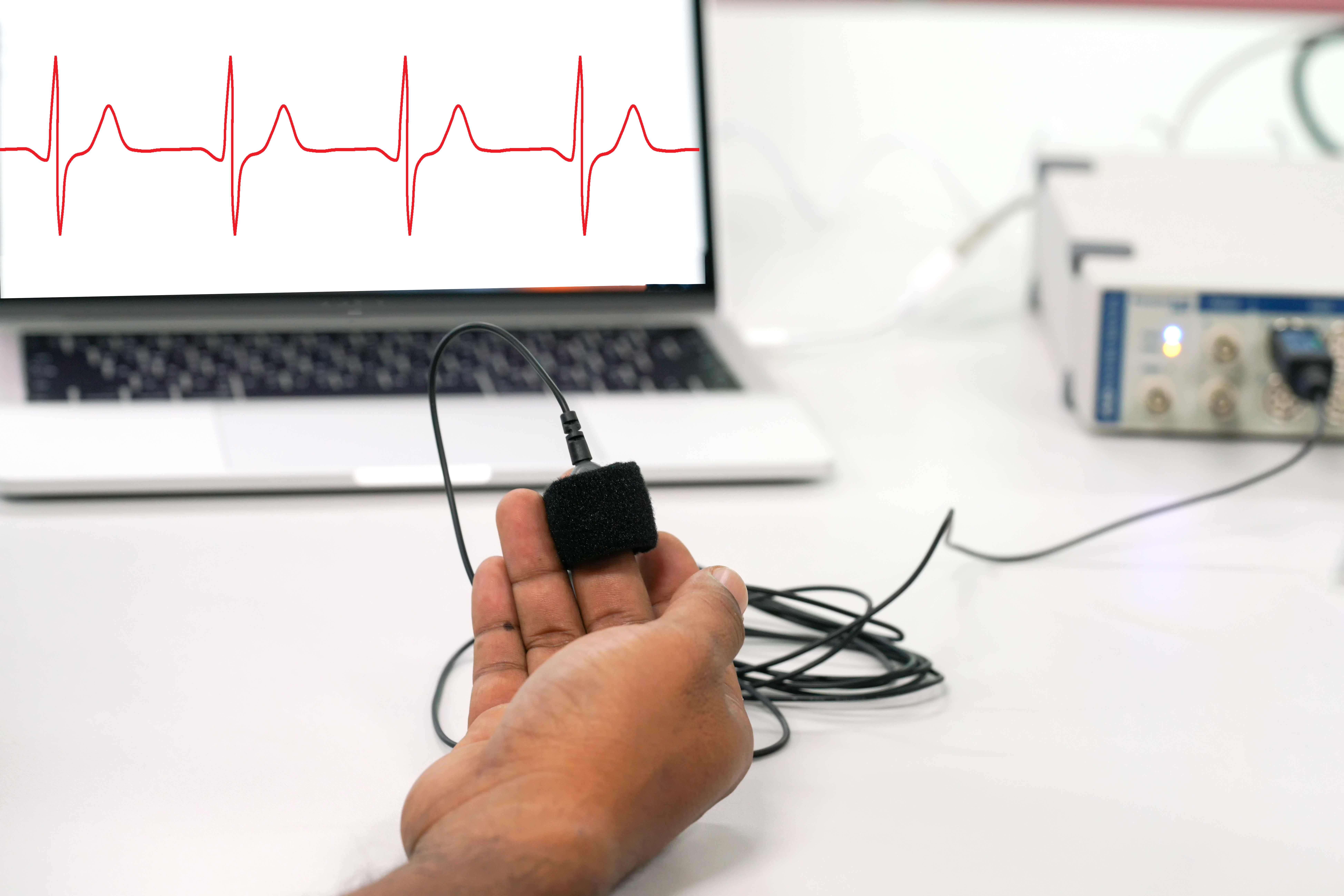
A University of Maryland expert in digital forensics and signal processing has received funding from the National Science Foundation (NSF) to develop a more accessible way to test for cardiovascular disease, the nation’s leading cause of death.
Min Wu, a professor in electrical and computer engineering with a joint appointment in the University of Maryland Institute for Advanced Computer Studies, is principal investigator of the $1.2 million award.
She is collaborating on the four-year project with Sushant Ranadive, an expert in cardiovascular physiology and assistant professor of kinesiology in UMD’s School of Public Health.
 Drawing on synergy between engineering modeling and artificial intelligence (AI), Wu is developing an innovative way to establish a relationship between the traditional heart monitoring method electrocardiogram (ECG) and a newer, more user-friendly method.
Drawing on synergy between engineering modeling and artificial intelligence (AI), Wu is developing an innovative way to establish a relationship between the traditional heart monitoring method electrocardiogram (ECG) and a newer, more user-friendly method.
Catching and treating cardiac abnormalities early is the most effective way to prevent serious heart problems, say the researchers. However, heart disease is often called the “silent killer” since many patients do not show early symptoms. This disproportionately affects low-income and disadvantaged populations who have limited access to affordable preventive care.
These types of patients would especially benefit from accessible and continuous cardiac monitoring, which usually entails multiple ECG tests where electrodes are placed on a patient’s chest to monitor heart activity.
While this is the gold standard for detecting heart abnormalities, it requires continuous in-person participation, say the researchers. Although it’s currently possible to obtain instant ECG data through a smartwatch or special smartphone attachment, they explain that these options are impractical for long-term monitoring.
 The UMD team came up with an alternative method that uses a wearable sensing process known as photoplethysmogram (PPG), which conveys information about the patient’s cardiac activity by detecting changes in blood volume beneath the skin.
The UMD team came up with an alternative method that uses a wearable sensing process known as photoplethysmogram (PPG), which conveys information about the patient’s cardiac activity by detecting changes in blood volume beneath the skin.
PPG is more accessible, cheaper, and less time-consuming than traditional ECG testing. However, the method is susceptible to noise and provides less cardiac information compared to the ECG sensors.
The main goal of the NSF-funded project is to address this challenge by using AI and biomedical and engineering principles to reconstruct ECG with PPG data, says Wu.
Her team plans to work closely with Clifton Watt, M.D., a cardiologist of the University of California, San Francisco, to explore AI-enabled understanding and promotion of cardiovascular health in exercise physiology, and transfer rich ECG medical knowledge base to the more user-friendly PPG domain. Wu recalls being intrigued by Watt’s formal training in computing before pursuing medicine, and his open-mindedness has encouraged her to pursue unconventional explorations.
“It is exciting to work with both Clifton and our in-house physiology expert, Sushant, in this truly cross-disciplinary endeavor. The bridge between ECG and PPG enabled by explainable AI could bring unprecedented opportunities to expand smart health knowledge and benefit public health,” Wu says.
Using another data set, Wu and her team have already carried out preliminary studies on a few hundred hospitalized patients. The NSF funding will allow them to answer a wide range of research questions, and hopefully lead to a user-friendly self-monitoring system that has sound rationale, opposed to the black-box AI approaches that are common today.
“So far our baseline models—which were developed by drawing insights from principled engineering modeling and sensing data—have been pretty good at reconstruction, suggesting that this is a promising smart health method for preventive health care,” says Wu. “Thanks to NSF’s generous award, we’ll be able to dramatically expand our research and deepen our understanding of monitoring cardiovascular conditions, hopefully leading to an accessible system that can save lives.”
—Story by Maria Herd